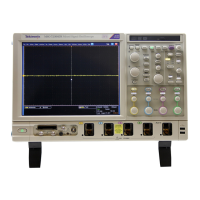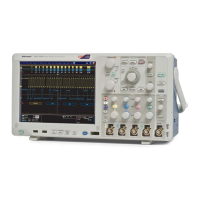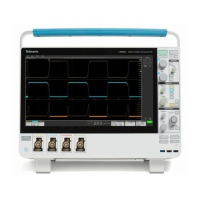
Do you have a question about the Tektronix MSO72304DX and is the answer not in the manual?
| Bandwidth | 23 GHz |
|---|---|
| Channels | 4 |
| Vertical Resolution | 8 bits |
| Input Coupling | AC, DC, GND |
| Memory Depth | 125 Mpts |
| Record Length | 125 Mpoints |
| Display | 12.1-inch LCD |
| Input Impedance | 50 Ω, 1 MΩ |
| Trigger Modes | Edge, Pulse, Runt, Timeout, Window |
| Operating Temperature | 0°C to +50°C |
Review safety precautions to avoid injury and damage. Comply with safety codes and follow accepted procedures.
Information for safely performing service procedures. Only qualified personnel should service the product.
Specifies power supply requirements and power consumption for different instrument series.
Procedure to perform signal path compensation for accurate measurements, especially at high sensitivity.
Guides on connecting probes and selecting input channels for acquiring analog signals.
Guides on using A and B triggers for sequential event capture and complex signal analysis.
Procedure to select channels and take automated measurements like Amplitude, Time, and RMS.
Use cursors to take manual measurements of amplitude or time on acquired waveform data.
Create math waveforms by combining and transforming source data for advanced analysis.
Procedure for building advanced spectral math expressions and adjusting spectral display parameters.
Compare signals to predefined templates or masks to perform pass/fail testing.
Using FastAcq mode to find and capture infrequent anomalies or glitches in signals.
Provides essential safety precautions for using probes and accessories to avoid hazards.











